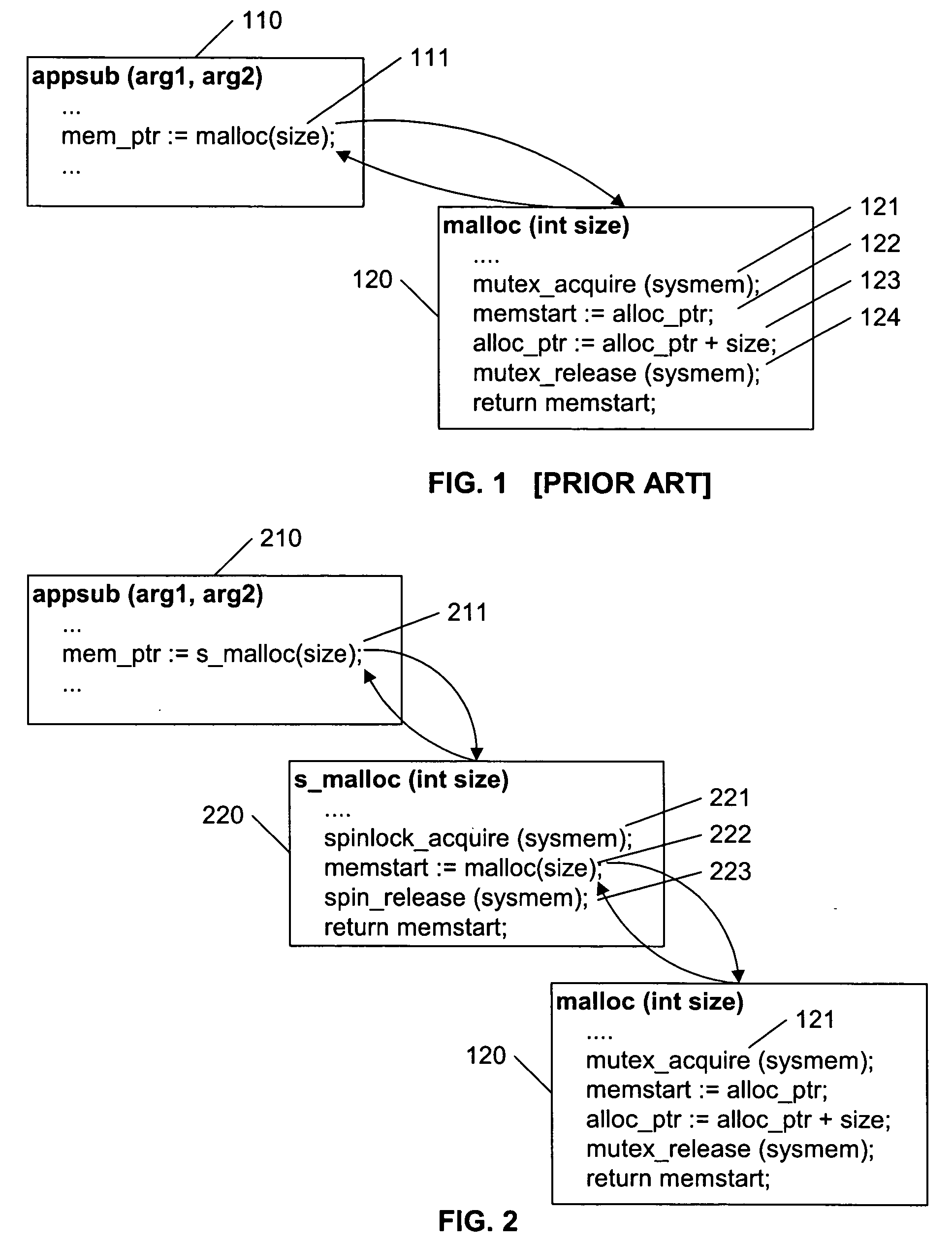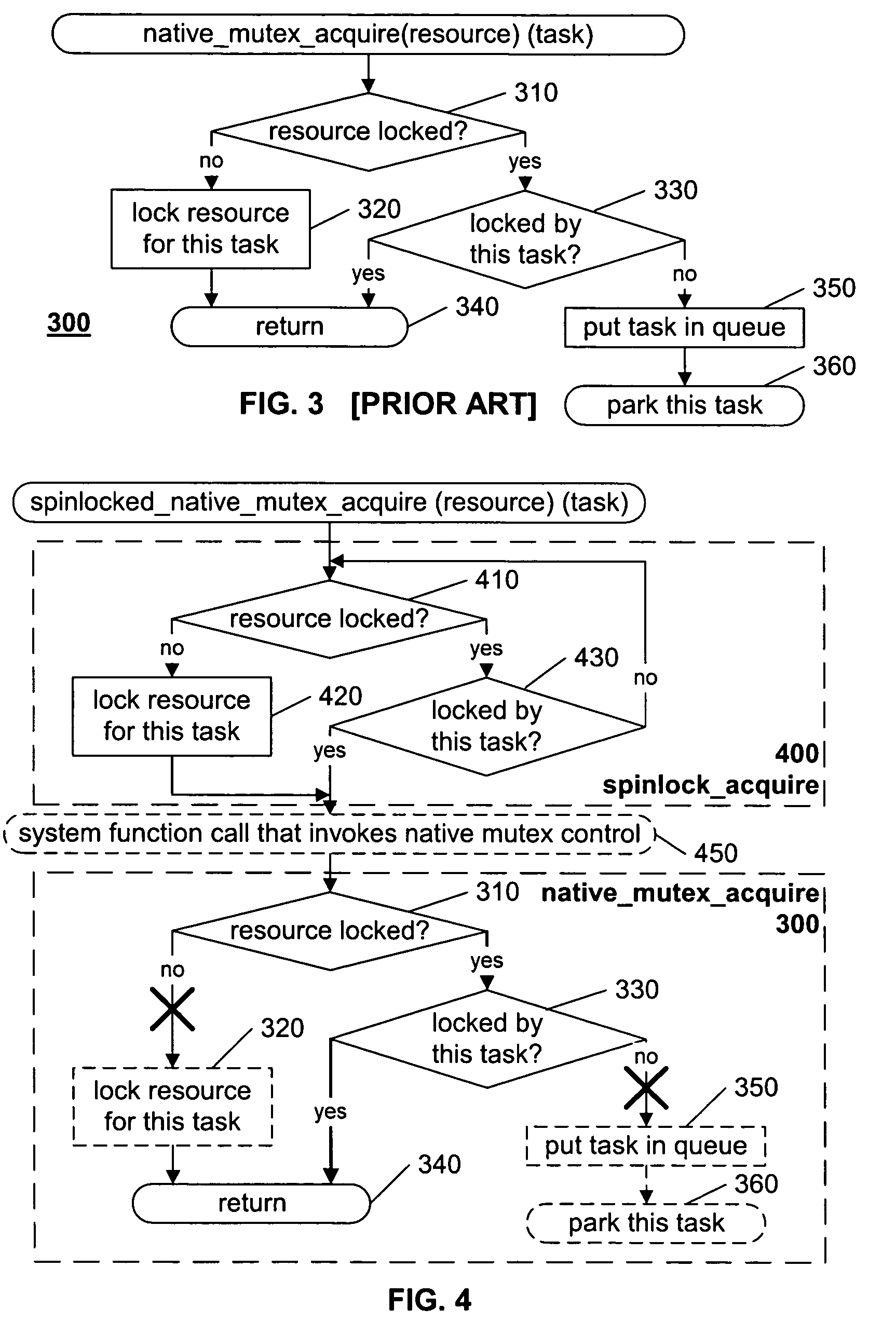Nested locks to avoid mutex parking
a technology of mutex parking and nested locks, applied in the field of nests, can solve the problems of consuming processing time, not necessarily resulting in performance efficiency for a given application program, application program may experience a 10:1 or even 100:1 degradation in speed, etc., to avoid such side effects, avoid inefficiencies and overhead associated with the effect of reducing the performance of the application program
- Summary
- Abstract
- Description
- Claims
- Application Information
AI Technical Summary
Benefits of technology
Problems solved by technology
Method used
Image
Examples
Embodiment Construction
[0020]FIG. 1 illustrates an example flow diagram of an application program 110 that accesses a shared resource using a conventional native mutex control technique. In this example, the conventional “malloc” (memory allocation) function 120 is used as an example system function that includes a native mutex control technique. This example function 120 is intended to illustrate a function or subroutine that is beyond the control of the developer of the application program 110. The function 120 may be provided, for example, as an internal function of the operating system, and / or included in a set of library functions provided in a program development system, and / or provided by another source, such as a configuration management system that enforces standardization among program developers by defining approved interface standards.
[0021] By way of background, the conventional malloc function 120 allocates a block of system memory (sysmem) to a process 110 upon request for a desired size o...
PUM
 Login to View More
Login to View More Abstract
Description
Claims
Application Information
 Login to View More
Login to View More - R&D
- Intellectual Property
- Life Sciences
- Materials
- Tech Scout
- Unparalleled Data Quality
- Higher Quality Content
- 60% Fewer Hallucinations
Browse by: Latest US Patents, China's latest patents, Technical Efficacy Thesaurus, Application Domain, Technology Topic, Popular Technical Reports.
© 2025 PatSnap. All rights reserved.Legal|Privacy policy|Modern Slavery Act Transparency Statement|Sitemap|About US| Contact US: help@patsnap.com



